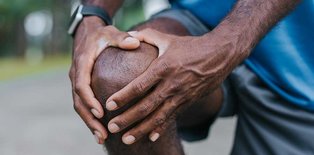Recovery Sandals and How They Can Help Relieve Foot Pain

You might have heard of recovery sandals, or seen others wearing them around. These shoes are typically open-toed with thick, cushiony sandals, and are billed as being the answer to sore feet everywhere. But are they right for everyone, all the time?
What are recovery sandals?
Recovery sandals, or recovery slide sandals, are slip on sandals that are designed to support the foot and promote comfort. Initially designed for athletes to wear following intense workouts or competitions, these sandals help to reduce soreness and fatigue in the foot caused by muscle overuse, helping the athletes recover quicker.
Typically, these sandals are designed with contoured footbeds to provide arch support and cushioning, supporting proper alignment of the bones and reducing strain on the feet. They are often adjustable and are made with flexible materials.
Who can benefit from recovery sandals?
Recovery sandals were first developed for athletes, but many people may find that recovery sandals help them with foot pain. Individuals who stand or walk for much of the day, including healthcare workers, retail staff, and hospitality employees, may find recovery sandals to be beneficial. For those who travel or go on extended hikes, recovery sandals can provide some relief from out-of-the-ordinary pain while walking more than they do in a normal day.
Some people with plantar fasciitis may find that recovery sandals help alleviate their foot pain when worn in conjunction with other supportive footwear or orthotics. One study showed that a group of participants with plantar fasciitis who wore orthotics in their shoes and then wore orthotic sandals at home found greater pain reduction compared to those who only wore orthotics.
Can you wear recovery sandals all the time?
Wearing recovery sandals following a workout or a long day on the job should be fine, but they may not be the best choice for everyday footwear. For example, many work environments require that employees wear protective, closed-toed shoes to prevent injuries. Also, if you're walking around a lot, especially on uneven ground, a shoe with ankle support and additional stability would be a better choice.
Alternatives to recovery sandals
Recovery sandals could be just one tool you use to help alleviate foot pain caused by overuse. A more proactive approach could be to strengthen the feet and lower legs, making them more resilient and better able to withstand longer periods of use. The American Academy of Orthopaedic Surgeons has a free foot and ankle conditioning program you can do at home.
Supportive well-fitting shoes as well as custom orthotics and insoles prescribed by your podiatrist can help with minor foot pain as well as alleviate tenderness while performing activities. By decreasing the pressure and stress on your feet, custom orthotics help you recover quicker and reduce risk of injury and pain.
Another option is to pamper yourself with an at-home foot massage. Massaging helps to stimulate blood flow to an area, increasing circulation, alleviating pain, and helping with muscle fatigue. Ice and contrast baths have been shown to be effective as well. Use of over-the-counter topical pain relievers can also aid in minor injuries.
When to see a podiatrist
If you find that you are experiencing foot pain for extended lengths of time, with or without trying recovery sandals, a podiatrist can help identify the source of the pain and provide more specific therapies. A podiatrist can help prescribe custom orthotics and treat you both surgically or more conservatively to address any gait issues that cause pain and would not be addressed by mass-produced shoes. The foot and ankle specialists at the Lifespan Orthopedics Institute specialize in working with patients to develop personalized treatment plans to address a wide range of foot and ankle concerns.

About the Author:
Michael Reuter, DPM, FACFAS
Dr. Michael Reuter is a board-certified podiatric surgeon and instructor in the podiatric residency program at Rhode Island Hospital's Center for Wound Care and Hyperbaric Medicine and at The Miriam Hospital.
Lifespan Living Newsletter
What is Plantar Fasciitis?

Dealing with heel pain? Read about the causes, symptoms, and treatment options for plantar fasciitis.
Find a Doctor

The right provider is in our network
Search more than 1,200 providers in our network.



